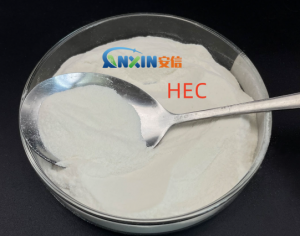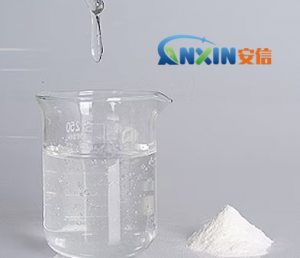Hydroxyethyl cellulose (HEC) is a nonionic, water-soluble cellulose ether widely used in construction, coatings, daily chemicals, and oil drilling. While HEC’s primary functions are often considered thickening, water retention, rheology adjustment, and suspension stabilization, it also exhibits certain film-forming properties in certain applications, particularly in coatings, adhesives, and surface treatments.
1. HEC Film-Forming Mechanism
HEC molecular chains contain numerous hydrophilic hydroxyl groups and partially substituted hydroxyethyl groups, which enable them to dissolve fully in water, forming transparent or translucent colloidal solutions. During the drying process of the solution, the water gradually evaporates, causing the molecular chains to converge and entangle with each other, forming a continuous three-dimensional network. This network is not a typical thermoplastic polymer film, but rather a physical film formed primarily through hydrogen bonding and intermolecular entanglement. Compared to film-forming materials like polyvinyl alcohol (PVA) and redispersible polymer powder (RDP), HEC’s film-forming ability is relatively limited, primarily manifested in the following:
Lack of film density: Weak intermolecular forces result in high porosity.
High brittleness: Lack of flexibility after drying and prone to cracking.
High water solubility: After forming, the film remains soluble or dispersible in water, but lacks long-term water resistance.
Thus, HEC’s film-forming function is more of a supplementary benefit than its primary function.
2. Factors Affecting Film-Forming Performance
Degree of Substitution (DS and MS): The degree and uniformity of hydroxyethyl substitution in HEC affect the alignment and bonding between molecular chains. A high degree of substitution tends to increase water solubility but reduces film strength.
Solution Concentration: Higher concentrations favor the formation of thicker films, while lower concentrations result in poorer film-forming properties after drying.
Drying Conditions: Slow drying allows for full molecular chain alignment and a more continuous film; rapid evaporation can easily cause cracking. Additive Effects: When used with PVA, acrylic emulsions, or redispersible polymer powders, HEC’s film-forming properties can be significantly improved, exhibiting greater toughness and water resistance.
Ambient Humidity: Because HEC is sensitive to moisture, its film-forming properties fluctuate with air humidity. High humidity causes the film to absorb water and soften.
3. Performance Characteristics of HEC Films
Good Transparency: Due to the uniform molecular distribution, the resulting film is generally transparent or translucent.
Smoothness and Flexibility: The film’s surface is relatively smooth, improving the feel of the coating.
Low Water Resistance: HEC readily reswells in water and cannot be used alone as a long-term protective film.
Limited Mechanical Properties: Low tensile strength and flexibility require blending with other polymers.
Biocompatibility and Safety: The film is non-toxic and non-irritating, making it suitable for use in daily chemical and pharmaceutical excipients.
4. Film-Forming Effects in Practical Applications
Coatings and Paints: In latex paints, HEC primarily serves as a thickener and rheology regulator. However, during the film-forming process, it can also form a protective film on the paint surface, helping to evenly disperse pigments and fillers and improving the coating’s gloss and smoothness.
Building Materials: In materials such as putty and mortar, HEC forms a thin film on the surface of particles after drying, improving the adhesion and workability of the powder.
Adhesives: The film formed by drying HEC solutions provides a certain degree of adhesion and is often used in combination with PVA or latexes for bonding paper, wallpaper, and packaging materials.
Household Chemicals and Pharmaceuticals: In cosmetics and pharmaceutical formulations, HEC films provide good skin adhesion and lubricity, while also increasing the retention time of active ingredients.
Surface Treatment: In papermaking and textiles, HEC films can improve surface smoothness and printability.
HEC film-forming properties stem from hydrogen bonding and entanglement between molecular chains. The resulting films are transparent, smooth, and non-toxic, but have limited water resistance and mechanical strength. Therefore, in practical applications, it often appears as an auxiliary film-forming agent or rheology modifier rather than the primary film-forming material. By blending or compounding with other polymers, HEC’s film-forming properties can be significantly improved, thus playing a wider role in the fields of coatings, adhesives, daily chemicals, and building materials.
Post time: Aug-25-2025

